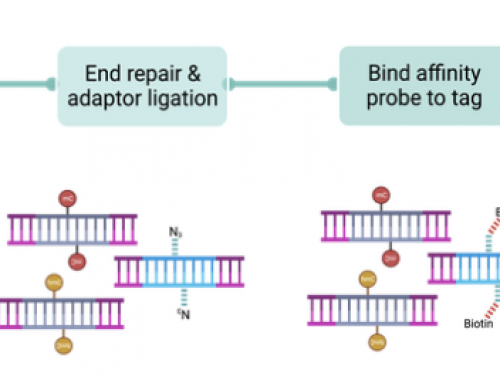This post is a follow on from my ABRF2017 presentation this morning. Slides are available on SlideShare.
RNA-Seq is the most widely published NGS method, but what do researchers mean by the term “RNA-Seq”? Virtually none of them mean sequencing of RNA. Most are talking about analysis of mRNAs (and other poly-adenylated RNAs) for differential gene expression. But RNA-Seq encompasses analysis of gene/exon expression, isoforms, allele-specific, RNA modifications, RNA structure and much more.
RNA-Seq should be renamed 3'-biased-medium-sized-cDNA-Frag-Seq https://t.co/y1wmeY8jRx
— Mick Watson (@BioMickWatson) March 28, 2017
Uncontrolled NGS method naming
It is not just RNA-Seq which is messed up. There are around 300-400 NGS ‘methods’ and the naming of these is horribly confusing. There is no controlled vocabulary, no conventions, and this has led to a bit of a mess. However all these methods are inter-related at some level in the molecular biology being investigated, or being used in the method itself. I tried to encompass this on a post from many years ago by showing methods in a subway map format – beautifully extended by Jay Shendure in a Nat Biotech paper.

The four main problems with NGS method naming:
1. Same method different names
methods that are essentially the same are published with different names e.g. MNase-Seq, MAINE-Seq and Nuc-seq. Suggest using MNase-Seq for all.
2. Same name different methods
Methods with the same names are very different e.g. Nuc-seq is a nucleosome positioning method, while Nuc-seq and sNuc-Seq are RNA and DNA nucleus sequencing methods. Suggest using MNase-Seq, snS1Nuc-Seq, snRNA-Seq.
3. Homophonic names
Names that sound the same and lack clarity e.g. CAP-seq, CapSeq, CaptureSeq or CAPP-seq, which name refers to each of the methods for CXXC affinity purification, 5’ anchored profiling of Pol II transcripts, targeted RNA sequencing or personalized profiling of cancer patients. Suggest using CXXCaP-Seq, 5’Cap-Seq, RNAcapture-Seq
4. Is it really a new method
New methods are modifications of an earlier method e.g. ChIPmentation is a low-input transposase-based ChIP-Seq method. In cases like this appending an additional acronym may be preferable e.g. AHT-ChIP-seq, an automated high-throughput ChIP-Seq method. Suggest using tnChIP-Seq
Some suggestions for fixing NGS method naming
- Previously published names should used e.g. ChIP-Seq; or modified e.g. HiChIP-Seq or TnChIP-Seq
- Case is important: most acronyms are formed from the method name e.g. RRBS, but the use of lowercase characters can help pronunciation e.g. ChIP-Seq
- Prefixes and suffixes: can be used to add information about a method e.g. “sc” and “Bis” to denote single-cells or bisulphite conversion, or to distinguish method variants e.g. miCLIP-m5A, or miCLIP-m6A
- Hyphens: can separate the method from the technology e.g. ChIP-Seq, ChIP-qPCR & ChIP-MS or denote significant protocol modifications e.g. PAR-CLIP-Seq








[…] after RNA fragmentation” does not slip off the tongue. I talked about this at the recent ABRF meeting in San Diego where I started by asking who was doing RNA-Seq (lots of hands went up) and then asked […]